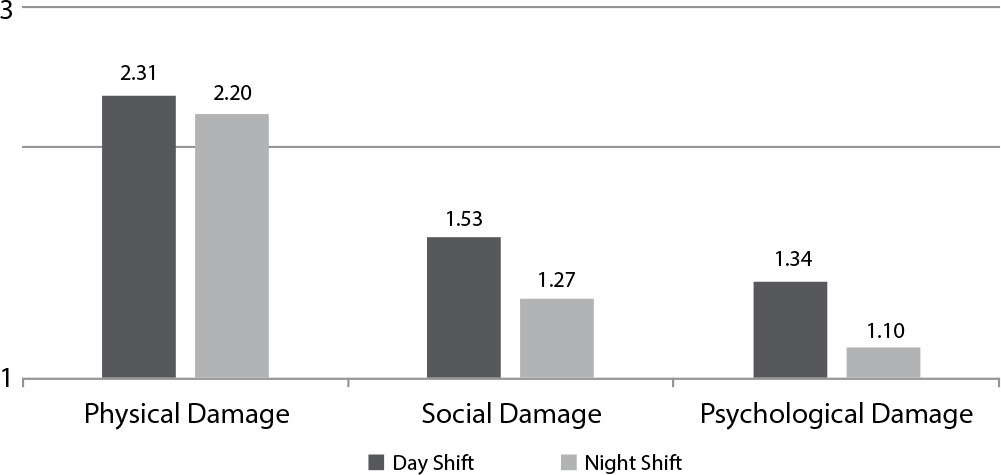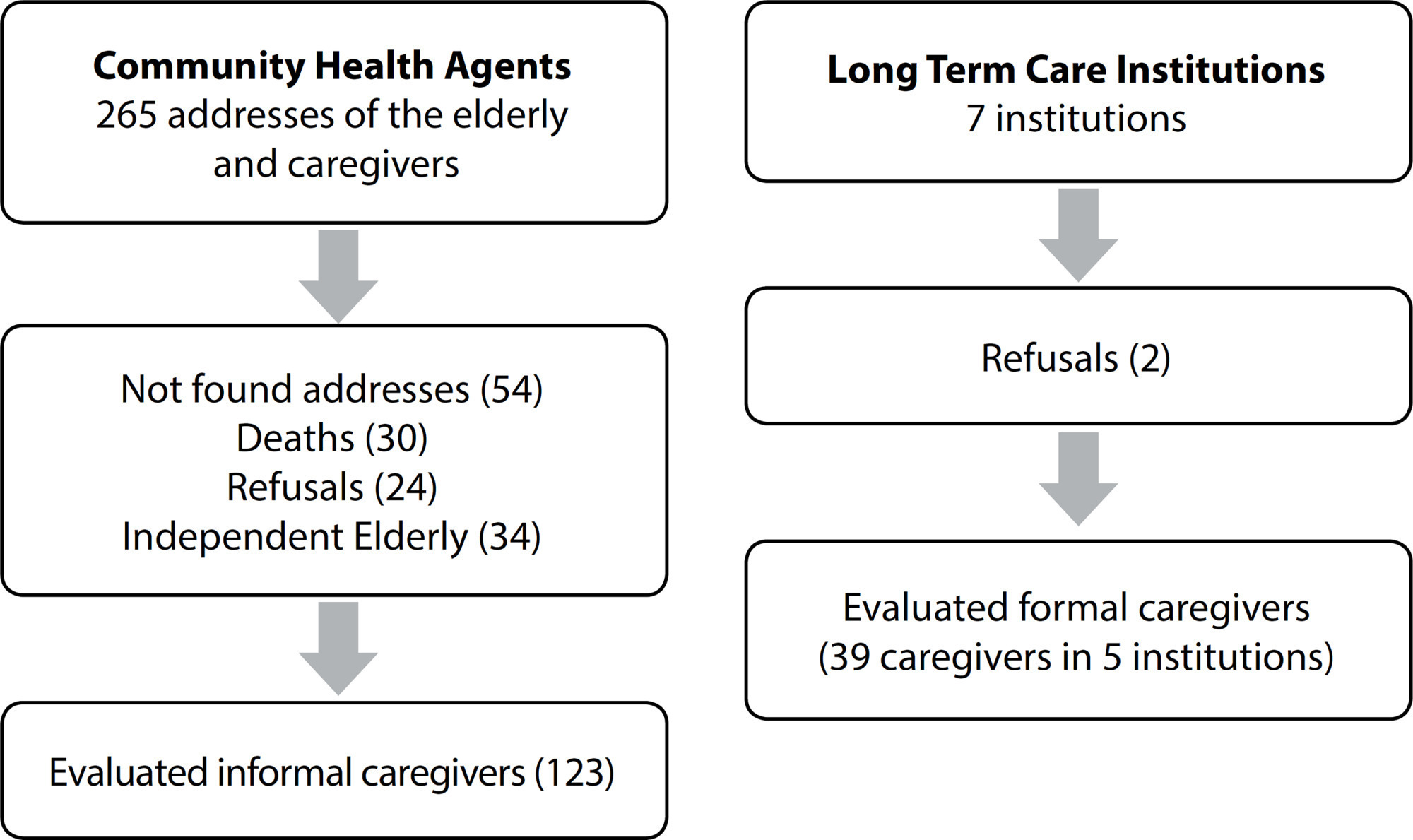-
ORIGINAL ARTICLE07-18-2022
Shift work schedule and damage to nursing workers’ health at Brazilian public hospital
Revista Brasileira de Enfermagem. 2022;75(6):e20210836
Abstract
ORIGINAL ARTICLEShift work schedule and damage to nursing workers’ health at Brazilian public hospital
Revista Brasileira de Enfermagem. 2022;75(6):e20210836
DOI 10.1590/0034-7167-2021-0836
Views0See moreABSTRACT
Objective:
to compare work-related damage between the day and night shifts of nursing workers in at a public hospital.
Methods:
a cross-sectional, and correlational study, conducted with 308 nursing workers from a Brazilian public hospital. Data collection took place from September 2017 to April 2018 using self-administered questionnaires that investigated socio-occupational variables and the effects of work (Work-Related Damage Assessment Scale). Analysis was descriptive and analytical with a 5% significance level.
Results:
during the day shift, the variables that most influenced nursing professionals’ health were body pain, headache, back pain, legs pain, and sleep disorders. When comparing the shifts, it was identified that daytime influences the studied variables more than nighttime. Job tenure was correlated with psychological damage.
Conclusions:
the results showed a greater influence of the day shift on the health of professionals who work in a hospital environment. Job tenure influences psychological damage.

-
ORIGINAL ARTICLE10-01-2022
Musculoskeletal symptoms in formal and informal caregivers of elderly people
Revista Brasileira de Enfermagem. 2022;75(2):e20210249
Abstract
ORIGINAL ARTICLEMusculoskeletal symptoms in formal and informal caregivers of elderly people
Revista Brasileira de Enfermagem. 2022;75(2):e20210249
DOI 10.1590/0034-7167-2021-0249
Views0See moreABSTRACT
Objective:
to evaluate musculoskeletal symptoms in formal and informal caregivers of elderly people, and check association with personal and work-related factors.
Methods:
this is a cross-sectional study. Instruments for assessment were the International Physical Activity Questionnaire, Self-Reporting Questionnaire-20, Borg’s effort perception scale and Nordic Musculoskeletal Questionnaire.
Results:
informal caregivers had been working for a longer time (60.2% vs. 41%), had more hours of work (37.4% >12h for day), less time off (85.4% vs. 2.5%) and lack of care guidelines (90.2%). The region with the most musculoskeletal symptoms was the spine and the greater dependence of the elderly, the greater the chances of developing musculoskeletal symptoms (OR= 1.3, 95% CI= 1.1-1.6, p <0.05).
Conclusion:
personal and work-related factors were more prevalent in informal group and the elderly person’s dependence interferes with the increase in musculoskeletal symptoms of caregivers.

-
ORIGINAL ARTICLE08-19-2019
Psycho social risks noted by oncology workers related to their quality of life
Revista Brasileira de Enfermagem. 2019;72(4):854-860
Abstract
ORIGINAL ARTICLEPsycho social risks noted by oncology workers related to their quality of life
Revista Brasileira de Enfermagem. 2019;72(4):854-860
DOI 10.1590/0034-7167-2017-0833
Views0See moreABSTRACT
Objective:
To analyze the relation between occupational psychosocial risks and quality of life related to health, felt by workers who work in oncology and palliative care units in a region of Chile.
Method:
Cross-sectional analytical study of quantitative approach, in which 110 health workers participated. Research met the ethical requirements of E. Emanuel.
Results:
Participants perceive greater exposure to psychosocial risks in the dimension of psychological demands and double presence. On the other hand, they see better results in the physical health component (: 76.72; SD 9.75) versus the mental health component (: 71.13; SD 6.38). In addition, there are relations with statistical significance, between psychosocial risks and quality of life related to Health (p≤0.05).
Conclusions:
This study shows that there the perception of psychosocial risks and quality of life are related, when considering the health of workers.



